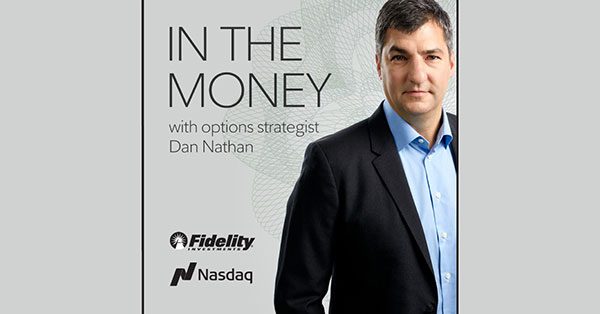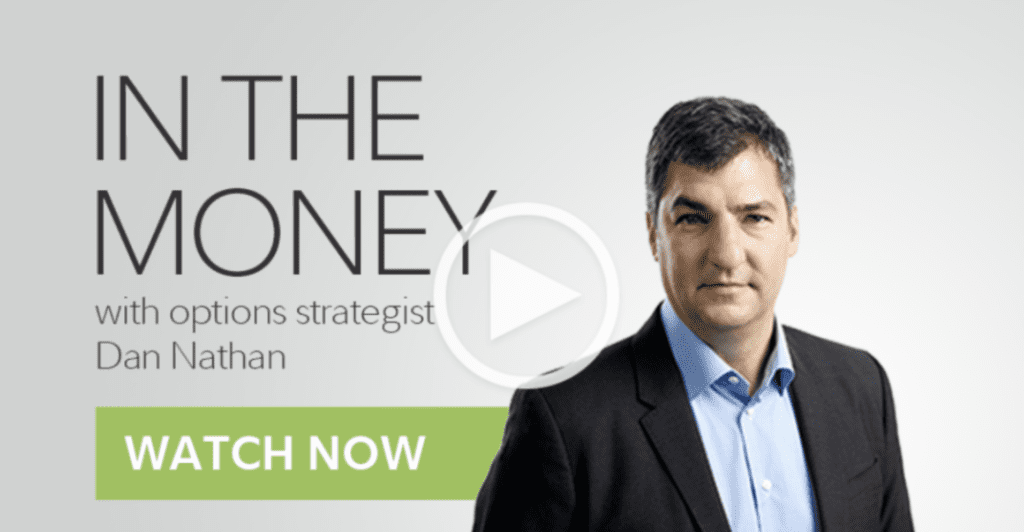
In The Money is brought to you by
Tuesday afternoon I filmed my weekly In The Money segment with Fidelity Investments. Click below to watch and see my notes below the video:
Here are my notes from today’s show:
*Note: prices and commentary reflect outlook as of mid-day Tuesday*
Macro: If you haven’t heard the term Stagflation out of the mouth of your favorite financial markets pundit, then after last Friday’s disappointing August jobs report, you are about to! The term is meant to highlight a unique economic environment where growth is less than expected and decelerating, prices of goods and services are rising for a whole host of reasons and unemployment is high.
Well let’s take some stock, August’s gain of 235K jobs was well below the approximate 1M jobs gained in June and July. Wages are going higher and the unemployment rate is above 5%, well above the pre-pandemic level of 3.6% which was nearly a 50 year low. The continued bottlenecks in the global supply chain and the uneven economic reopening around the world have caused shortages in goods like computer chips, which is causing end products to be in short supply resulting in higher prices and softening consumer confidence as eviction moratoriums and expanded unemployment benefits are running out.
And finally, Q3 GDP growth expectations are coming down hard, where some economists in the spring had expected 8.5% growth, Morgan Stanley just cut their 6.5% Q3 estimate in more than half to 2.9%.
All this as we head into an FOMC meeting in a couple of weeks where just a couple of weeks ago investors and strategists were expecting the announcement of a Fed Taper of bond purchases. If they are going to be facing questions of Stagflation in the coming weeks, then fear of doing anything that would pop the equity market bubble is unlikely:

Trade Idea #1: Options prices are just too cheap in my opinion not consider portfolio hedges or express outright bearish views with defined risk.
Bearish Trade Idea:
SPY ($453) Buy Oct 450 – 400 put spread for $6
-Buy to open 1 Oct 450 put for $8
-Sell to open 1 Oct 400 put at $2
Break-even on Oct expiration:
Profits of up to 44 between 444 and 400 with max gain of 44 below 400
Losses of up to 6 between 444 and 450 with max loss of 6 above 450
Rationale: this trade idea risks 1.3% of the ETF price, has a break-even down of 2%, and a max gain of ~10% if the SPY is down 12% in more than 5 weeks.

Trade Idea #2: Shares of EA have been in a bit of a holding pattern in 2021, spending most of the year so far between $135 and $150, its 52-week high made in January, and only after the stock’s recent 8.5% rally over the last month has the stock gone back to be up on the year.

Looking at the 5-year chart below it becomes apparent that the stock has been building a base just below its all-time from mid-2018:

Given all of the discussion about supply chain disruptions, causing chip shortages and port delays it makes sense to consider buying stocks whose products are not affected but such issues with most of them downloaded. The stock’s underperformance as investors favored more cyclical stocks over the last few months with the thought that the pandemic was in the rearview mirror might once again look to “pandemic plays” for the holiday season.
EA might continue to consolidate below its recent and all-time highs, but look to finance the purchase of longer-dated calls that will catch their early Nov Fiscal Q2 earnings report with the idea of playing for a massive breakout on a beat and raise.
Consider call-calendars:
Bullish Trade Idea: EA ($146.50) Buy Oct-Dec 150 call calendar for $4
-Sell to open 1 Oct 150 call at $3
-Buy to open 1 Dec 150 call for $7
Break-even on Oct expiration:
If EA is below $150 then the short Oct call will expire worthless and I am left holding the Dec 150 call long. In this case, I can look spread by selling a higher strike call in Dec to reduce my premium at risk and lower my break-even.
If the stock is above 150 on Oct expiration I can always cover the short call and keep the Dec long call intact.
The worst-case scenario is that the stock is well below or above the strike and the position starts to lose, the max loss is the $4 premium paid.
Lookback – On Aug 4 I detailed a bearish trade idea in AXP when the stock was $170:
AXP ($170) Buy Oct 165 – 145 put spread for $4.25
Now with the stock at $160 the spread is worth about 7

This was all I needed to see in WSJ this past weekend to keep me in this trade…
Covid-19 Resurgence Clouds Business Travel Rebound
Companies were counting on corporate travelers to return this fall, but more businesses are keeping workers home


